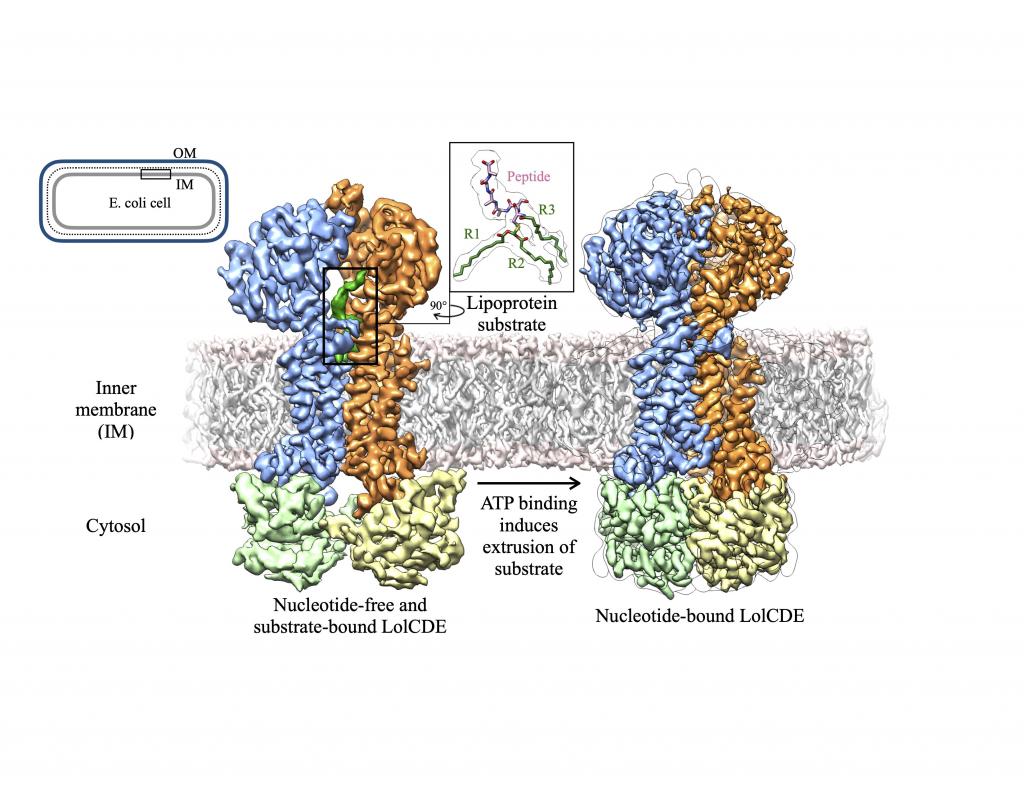
Lipoproteins play important roles in bacterial physiology and antibiotic resistance. Mature lipoproteins contain three acyl chains attached to the N-terminal amino acid and are located on the outer leaflet of the cytoplasmic membrane. Many lipoproteins in Gram-negative bacteria are further transported to the outer membrane by the localization of lipoprotein (lol) machinery. As the first step in this transport process, lipoproteins are selectively captured and extruded out of the membrane by the ABC transporter LolCDE.
In a recent paper published in Nature Communications, the Liao lab in collaboration with the Li group at Westlake University, used cryo-EM and functional assays to reveal how LolCDE specifically recognizes its lipoprotein substrate and how ATP-binding to the transporter leads to substrate release from its binding pocket. LolCDE has emerged as a target for developing novel class of antibiotics, and the findings from this study will help combat drug-resistant bacteria.